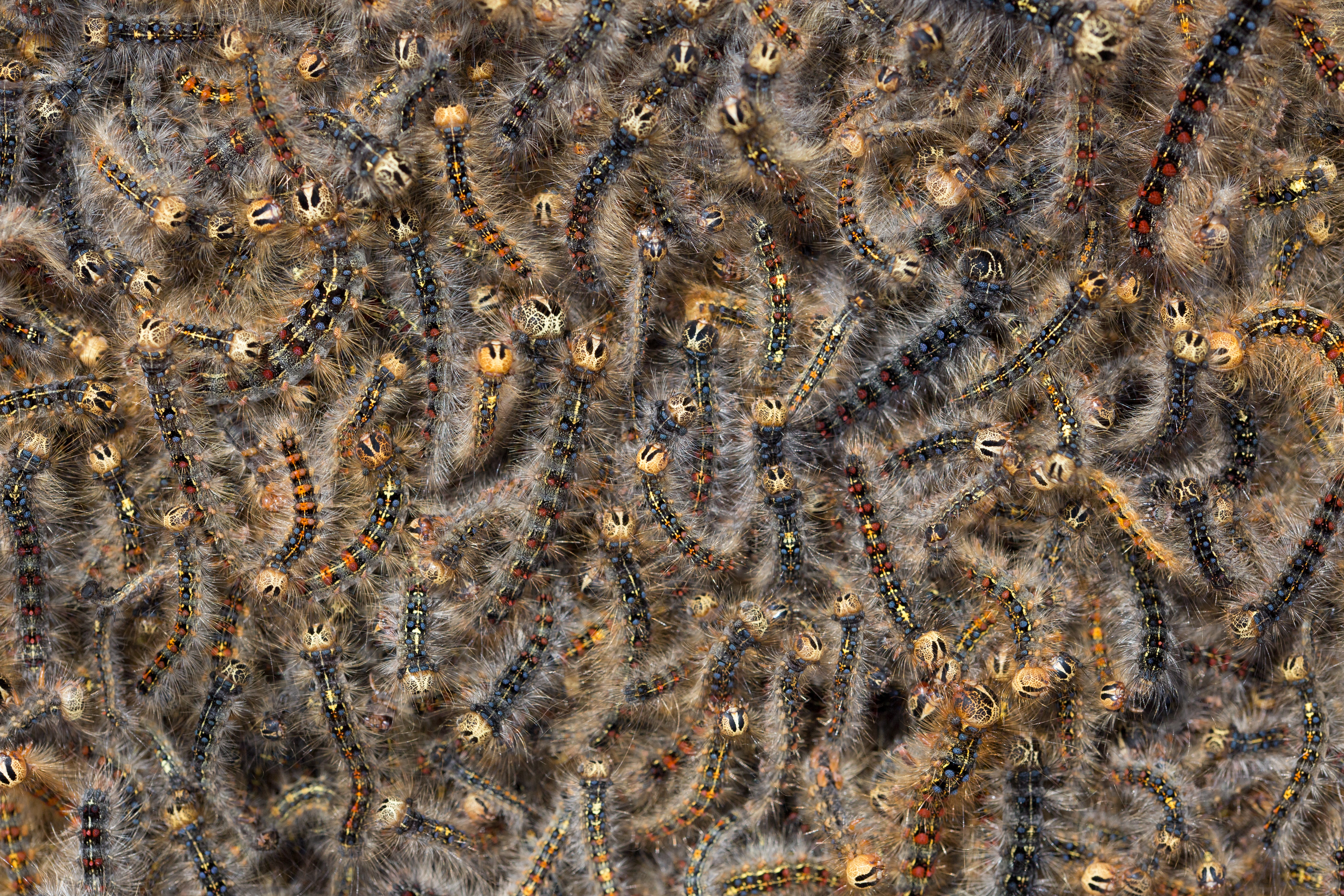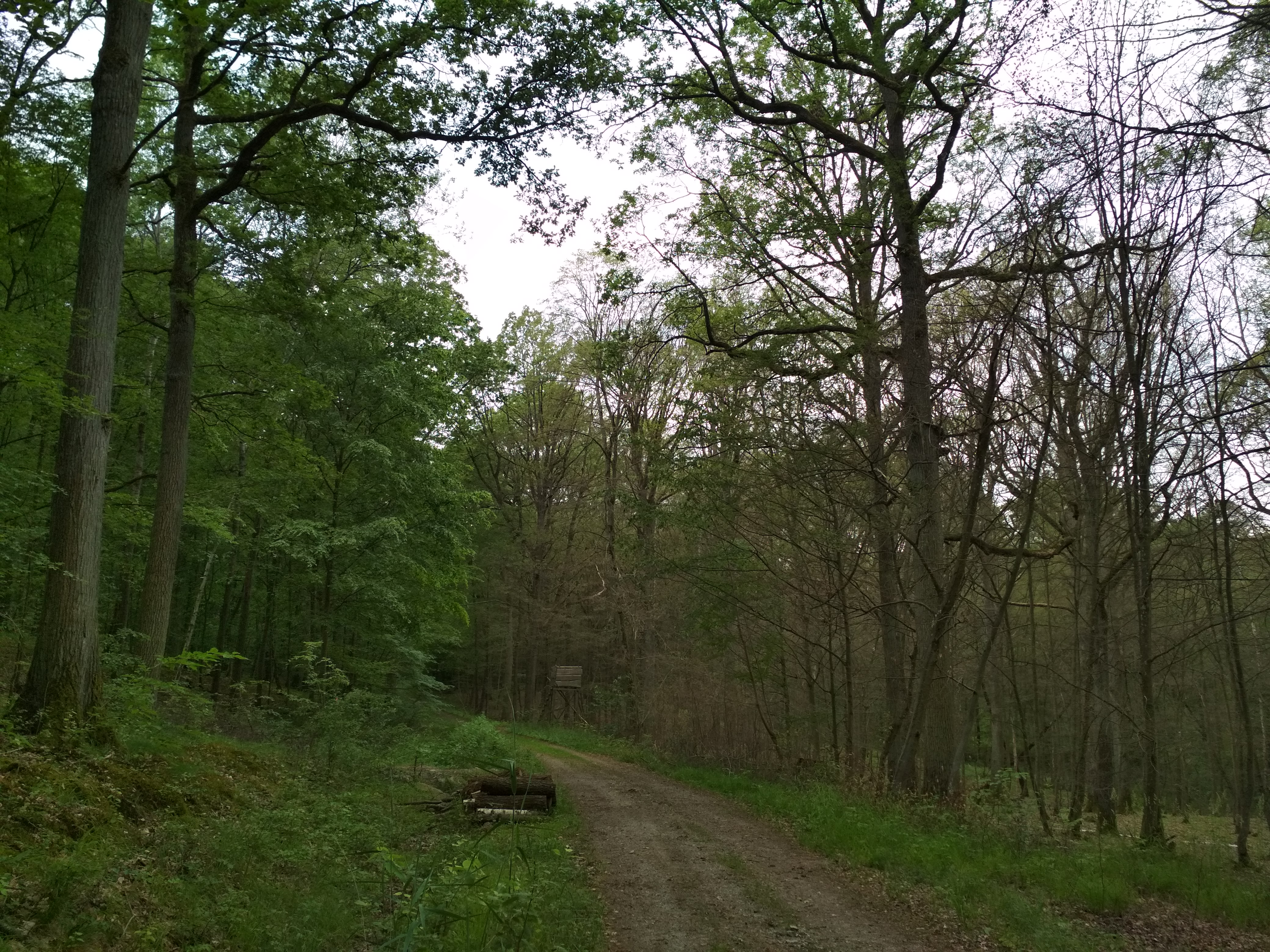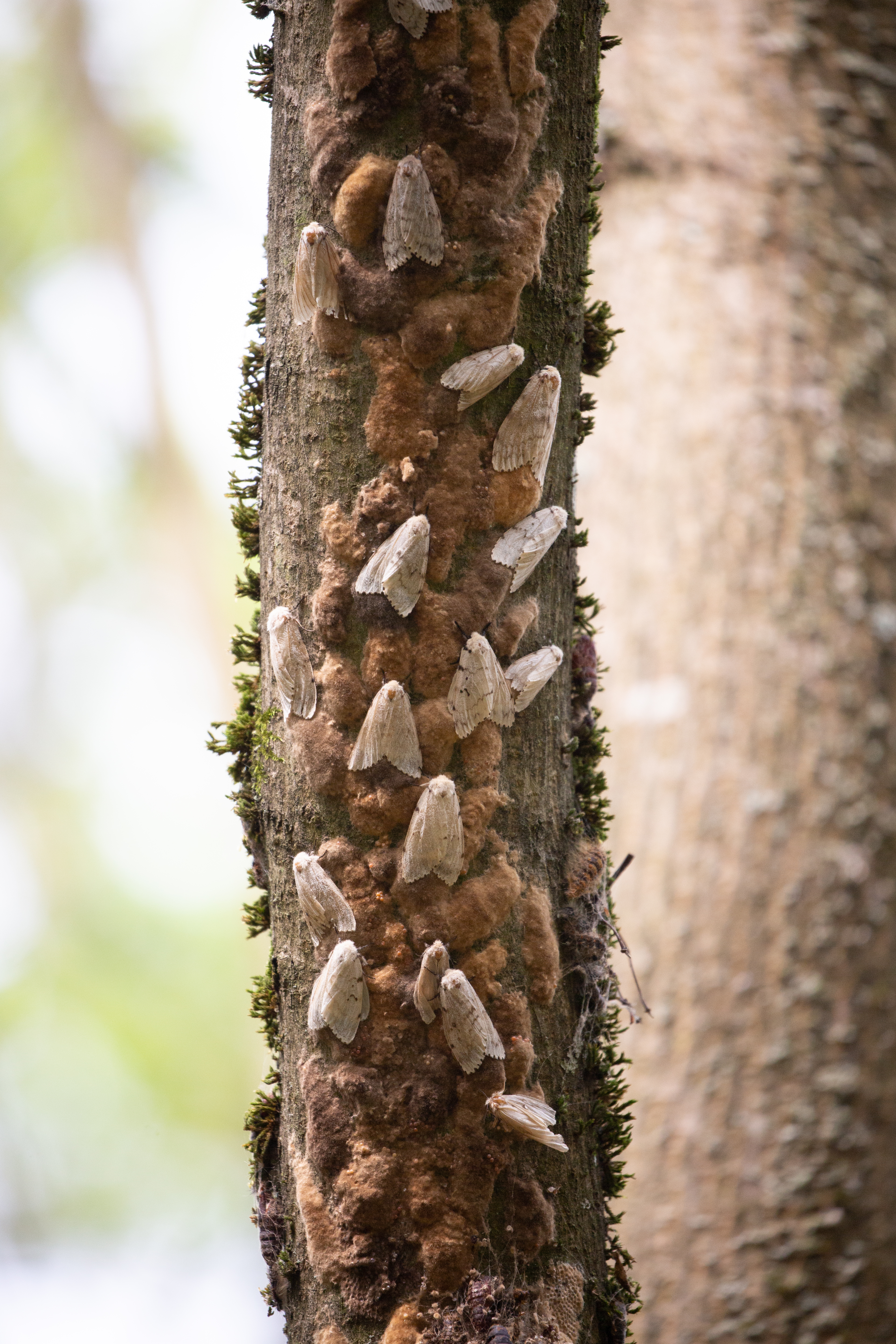In their latest Registered Report, Benjamin Leroy and colleagues outline their methods to review the pathways in which gypsy moth outbreaks, and their subsequent treatment, affect forest ecosystems. To find out more about Registered Reports, read our blog post here.
The gypsy moth is a species native to Eurasia and widely considered as one of the most severe pests of temperate forests. The exceptionally voracious caterpillars of the species can feed on over 300 trees species and regularly display dramatic population outbreaks causing large scale defoliation and damaging tree health.
In the US, where the species was introduced in the late 19th century, resulting annual losses on the timber market can amount to hundreds of millions of dollars. Each year, tens of thousands of hectares of forest are treated with insecticides to protect trees from defoliation and slow the spread of the gypsy moth towards the West. In Europe, insecticides are regularly used in many countries, though comparatively little is known about the magnitude of the impacts of gypsy moth outbreaks on wood economy.

Outbreaks and their management do not come without an ecological cost
Insecticide use in forestry represents only a small fraction of the global pesticide market. While preventive treatment and broad-spectrum insecticides are commonplace in agricultural production, forest treatments are exclusively carried out when high risk of defoliation are predicted and licensed substances have comparatively fewer side-effects.
Although insecticides sprayed for gypsy moth treatment are toxic to most species of butterflies and can plausibly affect insectivorous birds and mammals, leaving a gypsy moth outbreak to run its course can deeply modify natural habitats through defoliation and be detrimental to other animal species.
Therefore to make more informed management decisions, it is essential to set up experiments that allow a direct comparison of the economic and ecological impacts of gypsy moth outbreaks and their treatment with insecticides.
More robust field studies for well-informed management decisions
In a previous study, we emphasised the importance of sufficient replication to detect population-level effects of insecticides in ecosystems that are naturally complex and heterogeneous. However, faced with major practical challenges and limited resources, insecticide risk assessment in forests routinely relies on subpar experimental designs.
In our latest Registered Report, we describe a large-scale field experiment designed to investigate these trade-offs. We quantified the defoliation risk by monitoring gypsy moth egg-masses in hundreds of oak forests in North-western Bavaria, Germany, and selected 48 of them for our experiment. These forest plots are located within 12 different areas, each comprising of two sites at high risk and two sites at low risk of defoliation. One plot of each risk level was then aerially treated with the insecticide tebufenozide in each area.

We tracked the evolution of the outbreak by monitoring gypsy moth populations and defoliation across our plots throughout the year 2019. Gypsy moth population were completely suppressed from sprayed plots, while population from untreated outbreak plots experienced widely different outcomes, from surprisingly low levels of defoliation to a complete defoliation of the stand. Some populations collapsed spectacularly, perhaps due to the rapid transmission of pathogens in overcrowded forest canopies.
These diverse and unpredictable outcomes of gypsy moth outbreaks further emphasise the importance of fostering our ability to predict defoliation. Due to the relatively low accuracy of current assessments of defoliation risk, financially and ecologically costly spraying operations may, in some cases, bring no real benefit to forest stakeholders.

With this experiment, we intend to foster our understanding of gypsy moth population dynamics in order to produce more accurate estimations of defoliation risk. Furthermore, we will monitor the relative impacts of outbreaks and insecticides on forest yield and non-target fauna (insects, birds, bats) for several years to quantify the economic and ecological cost of outbreaks and insecticides, so that it can be fully considered in management decisions.
Read the full Registered Report: “Relative impacts of gypsy moth outbreaks and insecticide treatments on forest resources and ecosystems: An experimental approach” in Issue 2:1 of Ecological Solutions and Evidence.

One thought on “Gypsy moths: Understanding the impact of a dreadful forest pest”